Milwaukee Terminal No. 6
(MT6)

Milwaukee Terminal No. 6
(MT6)
M.T. No. 6
Originally called the Tacoma, she was built as a side-wheel steamer with the purpose of transporting entire trains across the Columbia River. Contracted with the Northern Pacific Railway Company, the Harlan and Hollingsworth Company of Wilmington Delaware built what was called the “Iron Steam Transfer Boat” for the price of $400,000. The mighty Tacoma was built in Delaware but disassembled, boxed and shipped off to Oregon. The Train Ferry was then delivered in 57,179 pieces and reassembled in the summer of 1883 at Smith Bros. and Watson in Portland Oregon, taking the mark as the second largest ferry in the world.
In September 1883 the Tacoma began her 24 year service carrying trains across the Columbia River.
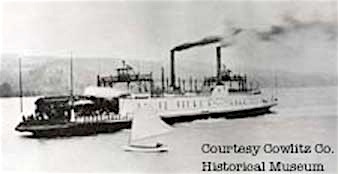
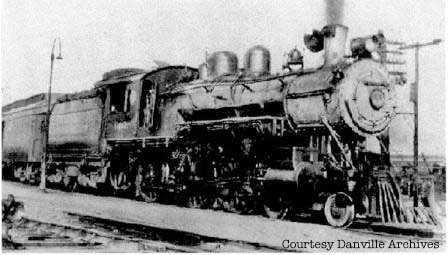
Later the Old 97 would derail on September 27, 1903, killing 11 people.

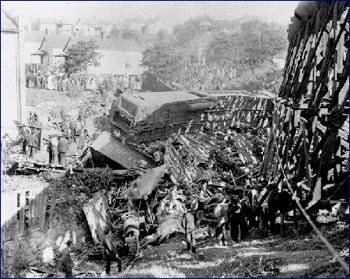
Aboard the Tacoma she regularly had a crew of Captain, two Pilots, two Mates, a Chief Engineer, four Assistant Engineers, a Steward, four Firemen, a Night Watchman, and several deck hands.
The Captain of the Tacoma made $150 a month, which was quite a bit considering the Aldrich Report stating the highest wage for 1890 was approximately $70 a month (not including weekends-around $95 then); and the Pilots pulled in around $90.
In 1900 rumors began circulating that the Tacoma’s days were numbered. Instead of maintaining the Tacoma at $75,000 a year, the plan was to build up the north side of the Columbia River from Kalama to Vancouver and install a bridge. The complaint was one that it was too much money to keep running, and two that every passenger train, as well as every freight train is delayed by a half hour using the ferry. It just wasn’t a cost effective way to get the trains across the Columbia.
Although, in the 1900’s rail transportation was booming. It was rumored that the Tacoma carried, along with her usual cargo, passengers commemorating Washington’s statehood, and President Teddy Roosevelt’s 1903 tour of the West undoubtedly carried the presidential train across the Columbia for his short stop in Kalama, on May 22nd.
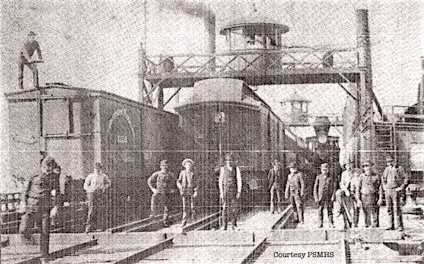
On October 20, 1903, Robert Harrison billed Captain Gore $20 for examining the structure from the water line to the keel, further stating in his report that the bottom was in good condition. The Tacoma wasn’t giving up just yet.
In a telegram dated February 28, 1904 from W.C. Albee, were instructions for improvements. New boilers were to be installed, the next morning in fact, along with four steel deck beams under each coal bunker, and in May the same year, an order was placed for 100,000 feet of deck planking to replace the decks. There were also plans to give the aging ferry a new coat of paint to brighten her up and make her more conspicuous on a dark night. These upgrades were scheduled to be finished August 1905, but cost overruns, weather delays, and unexpected repairs pushed them to the end of the year.
In 1908, after being in service for 24 years, the Tacoma’s service was no longer required. The railroad bridge across the Columbia River was completed, and she made her last run on December 25th of the same year.
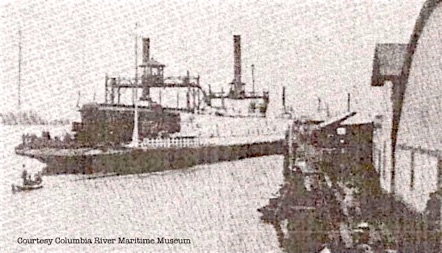
Milwaukee Railroad purchased the Tacoma in 1917 and towed her to her new home, the Puget Sound. She was then dismantled to the hull (except for one pilot house), renamed Barge No. 6 and used to transport railroad cars across the Sound. (It is believed the name MT no. 6 stands for “Milwaukee Terminal Number 6”).
At around 11:00 pm on December 31, 1949, just before the New Year, the Milwaukee Barge No. 6 was struck by the 6,000 ton C2-S-E1 freighter Fairland on her way to the Nettleton Mill.

The Fairland was trying to avoid a tow of logs, but managed to strike the No. 6 instead. The night was blanketed by snow and fog, the Milwaukee Barge No. 6 was in tow by Captain Pete Kittleson of Kent aboard the tug Milwaukee, as it entered into Elliot Bay bound for the Milwaukee dock from Port Townsend. The barge had aboard her 3 crew; Harlem House, Ray Laigh, and Keith Brents all of which got off safely. She was rumored to have been carrying 19 sealed railcars, of these six broke loose and floated to shore. The Foss tug Sandra Foss rushed out for assistance, picked up the crew, but the former Tacoma wouldn’t be saved. She was sent to the bottom in 20 minutes and now lies in Elliot Bay, presumably, in over 579 feet of water.
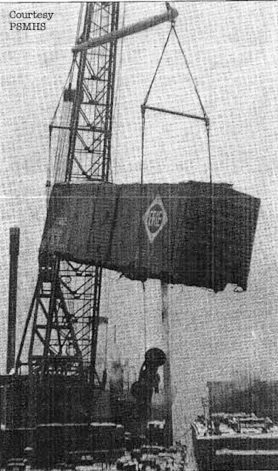
VIDEO BELOW

L & R
Courtesy
Blue Ridge
Institution Museum



-Home